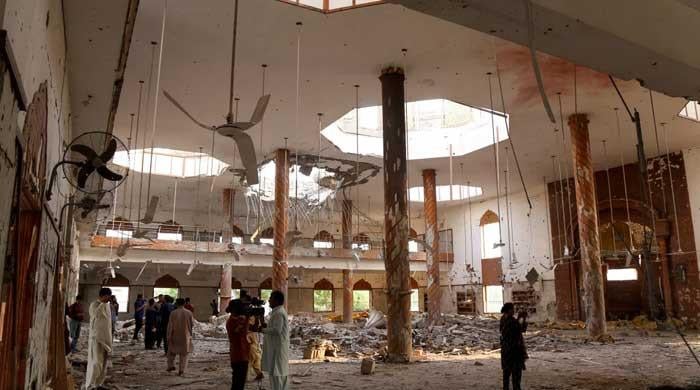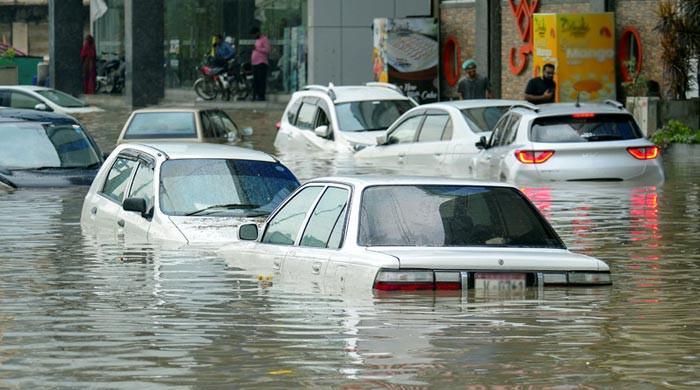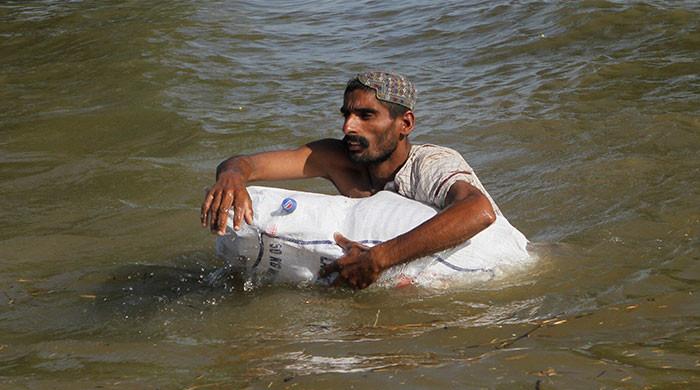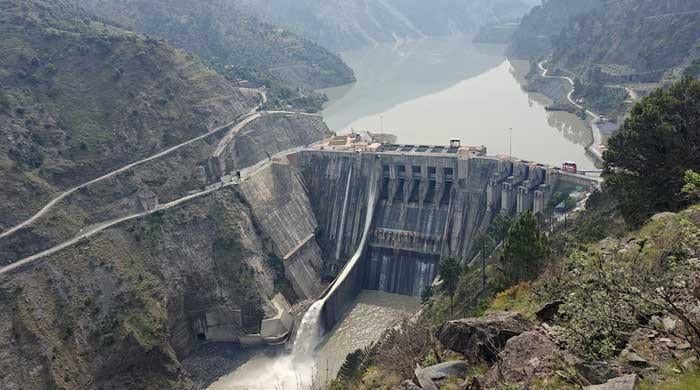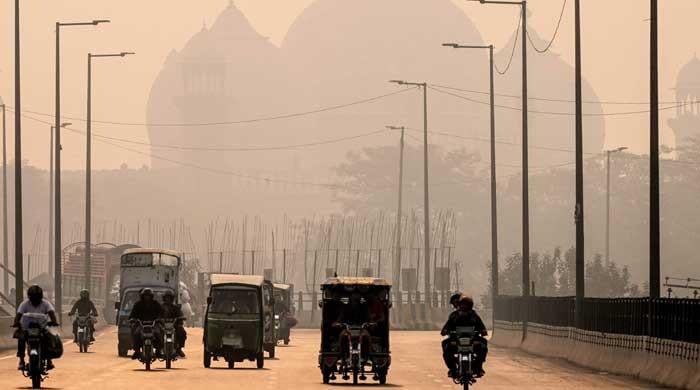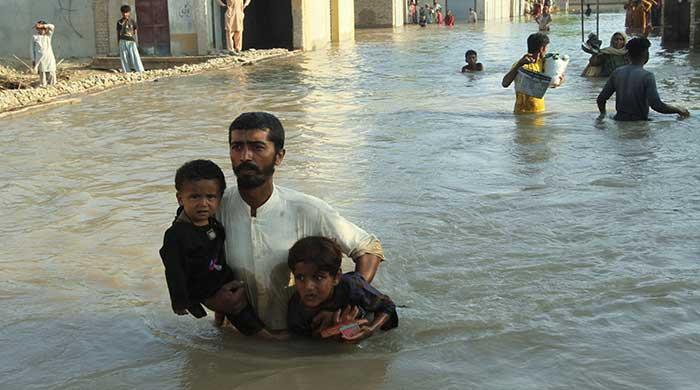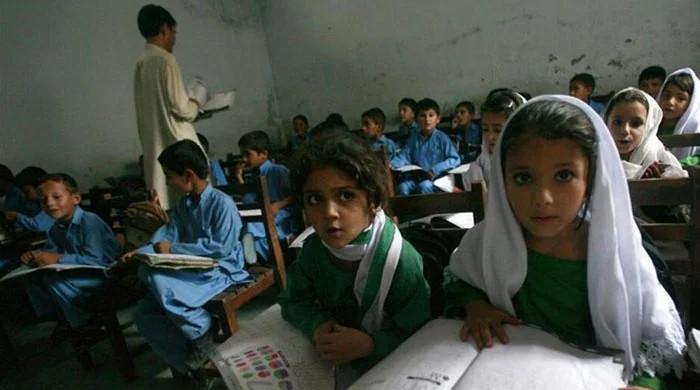US pullout vs Soviet withdrawal from Afghanistan
Poorly planned US withdrawal was result of the Doha Agreement signed between America and Taliban
December 08, 2024
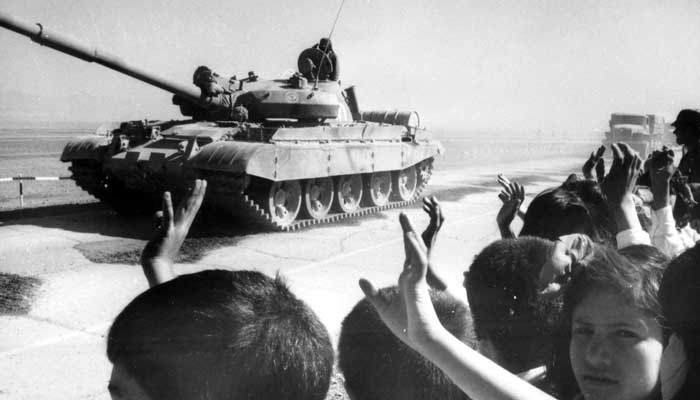
Think of the United States' withdrawal from Afghanistan and see what image comes to your mind.
Those who had witnessed that chaotic August 30, 2021, would agree that it's a picture of people desperately running on the Kabul Airport runway to catch the moving planes.
Unfortunately, some were crushed as they tried to hang from outside on the US C-17 cargo aeroplane taxing on the tarmac or the passenger planes going in any direction.
The readers would be equally mindful of a bigger tragedy that struck the same airport on August 26 when a suicide bomber killed 13 US servicemembers and almost 170 Afghans.
Ironically, US President Biden had earlier told the nation that: "The drawdown is proceeding in a secure and orderly way, prioritising the safety of our troops as they depart."
As a matter of fact, he had every belief that speedy drawdown was a recipe to ensure safety.
Next, came the Hellfire missile strike intended to kill the alleged ISIS-Khorasan, also known as Daesh, perpetrators of that blast. It left another 10 civilians dead with a due apology.
Now turn the clock a bit further back. Those who are in their fifties can still recall or others may google "Soviet withdrawal from Afghanistan" to see an entirely different image.
It's the picture of an iconic"Friendship Bridge" that witnessed the last withdrawal of the Soviet soldiers from Afghanistan via Uzbekistan. As the columns of tanks passed over the Amu River, in the broad daylight, it was a somber moment.
The Soviet forces entered Afghanistan on December 27, 1979, in response to pleas from the Afghan government for assistance against insurgent movements. However, after taking a huge toll, they were leaving on 15 February 1989.
That day, one could see "Red flags" flying over the tanks crossing the bridge. Many of those who had thronged there wanted to say goodbye.
You could even see girls waving to the Red Army personnel who were no longer destined to return.
In those days, the most popular Russian song of the "unfinished war" used to be "We Are Leaving".
The song had a theme Goodbye, Afghanistan — the ghostly world. The songwriter had admitted that it was not right to speak kindly of Afghanistan but there was something that had saddened battle commanders.
Let me quote a few couplets:
Farewell, mountains, you witnessed,
What we had, what we gave,
Our hope and sorrow,
How to live amongst the people,
Our biographies are in half a dozen lines,
Sociologists condensed, they are now in vogue,
The East just isn’t submissive to science.
We are leaving The East, leaving, leaving.
Upon leaving, the Soviets confessed that they could not subdue the enemy. After all, long before the last soldier crossed the bridge, the Soviets too had paid a heavy price for their intervention.
However, it was an exit, planned well in advance. As Mikhail Gorbachev said: "A clear goal has been set to speed up our process in order to have a friendly country and leave […] all our actions in all avenues — political, diplomatic, economic".
It's impossible to fairly compare the US withdrawal with that of the Soviets if someone has not been to Afghanistan and Russia. However, the above images of the Friendship Bridge give a glimpse of what went wrong as the United States left its ‘unfinished agenda.’
The poorly planned US withdrawal was the result of the Doha Agreement signed between America and the Taliban, who were yet to unleash terror raids in many parts of the country including Kabul.
On the contrary, Moscow left Afghanistan after the 1988 Geneva Accord signed by Afghanistan, Pakistan, the Soviet Union and the US.
It is another fact that the then-communist leader Mikhail Gorbachev, who had termed Afghanistan a "bleeding wound", had almost decided to quit anyway. It was basically for the economic and military reasons. This is more reflected in his agreement to the ever-changing terms of the [President Ronald] Reagan administration.
Another stark difference in withdrawal was how fast Kabul fell to the Taliban. Emboldened by the Doha deal (29 February 2020), the Taliban fearlessly attacked the demoralised Afghan forces and captured one province after another including Kabul (15 August 2021) at lightning speed.
On the other hand, the Marxist regime of President Najibullah survived over three years after Gorbachev pulled the Soviet forces. It was despite the fact that the ground was open for the so-called Mujahideen, who had a flood of weapons and dollars coming their way.
So, why the US could not leave an image of a well-wisher of Afghanistan?
First and foremost, the systematic failure of the Washington-backed governments of Hamid Karzai and Ashraf Ghani caused dissatisfaction among the masses.
Then among factors, the US itself left Afghanistan at the mercy of the same Taliban it had attacked on October 7, 2001.
When President Biden was asked if he trusted handing over the country to the Taliban, his answer was a clear case of misjudgement.
"It's a silly question. Do I trust the Taliban? No. But I trust the capacity of the Afghan military, who is better trained, better equipped, and more competent in terms of conducting war," he said.
The world witnessed how the Afghan military melted away in months. However, the Biden administration should be credited for something that was most needed.
It is the evacuation of over 183,000 Afghan nationals who had worked side-by-side with US forces, including interpreters and translators. It is something unprecedented in recent history.
On the other hand, Gorbachev had left his comrade Afghans "boil in their own juices". There can be many other interesting features of those two historic moments.
However, in the end, Biden came to the conclusion that: "It's up to the Afghans to make the decision about the future of their country".
Well, courted by both [Donald] Trump and Biden administrations, the Taliban have enforced that decision down the barrel of the gun.
Was that a predicted outcome?
Well, on August 3, 1988, then-prime minister of India Rajiv Gandhi warned then-US president Reagan of this scenario. In his letter, the Indian leader said: "A fundamentalist regime in Kabul would not be in the interest of India or the US. By its very definition, fundamentalism cannot be reconciled with the basic values which both of our countries cherish: democracy, equal rights for all citizens, equal status for women and other such human rights".
Strangely, based on approximately the same lines, the US is against recognising the Taliban as a legitimate ruler. And Moscow, who has once made fissures in the unity of the Mujahideen, is extending cooperation with the Taliban.
Withdrawal on one side, some of the myths of the Soviet intervention have also faded away.
According to the National Security Archive, on June 5, 1988, a cable was sent from Ambassador Raphel to the secretary of state.
It was based on the conversation between US General George Crist and Ambassador Raphel with some important military personnel of this region.
According to the summary, the officers made a point that after the withdrawal: "The Soviets would try to split Afghanistan and control it in other ways because of Russia's "historic desire to expand toward the warm waters of the Persian Gulf and the Arabian Sea".
The cable mentions that Ambassador Dean wrote "nonsense" on the margins of that document next to that sentence. Though it was the same belief shared by Carter's national security adviser Zbigniew Brzezinski.
In a nutshell, the benefit of peeping into history is to learn lessons. As President-elect Trump starts his second term in the White House, he has a chance to take steps that can improve the image of the US in this region.
After all, he has vowed to make America great again.
The author is Controller News at Geo News. He posts on X at @NasimHaider2 and can be reached at [email protected]
Disclaimer: The viewpoints expressed in this piece are the writer's own and don't necessarily reflect Geo.tv's editorial policy.




